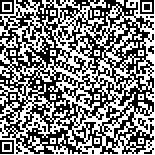| 叶 丹,谢长生.表皮生长因子受体酪氨酸激酶抑制剂相关皮疹的中西医治疗进展[J].肿瘤学杂志,2019,25(3):256-260. |
| 表皮生长因子受体酪氨酸激酶抑制剂相关皮疹的中西医治疗进展 |
| Progress on Treatment of EGFR-TKI-related Skin Rash with Traditional Chinese Medicine and Western Medicine |
| 投稿时间:2018-07-21 |
| DOI:10.11735/j.issn.1671-170X.2019.03.B017 |
|
 |
| 中文关键词: EGFR-TKI 皮疹 中西医治疗 |
| 英文关键词:EGFR-TKI skin rash Chinese and western medicine treatment |
| 基金项目: |
|
| 摘要点击次数: 2225 |
| 全文下载次数: 411 |
| 中文摘要: |
| 摘 要:表皮生长因子受体酪氨酸激酶抑制剂(epidermal growth factor receptor-tyrosine kinase inhibitor,EGFR-TKI)为EGFR敏感突变非小细胞肺癌(non-small cell lung cancer,NSCLC)患者一线治疗方案。近年来多项研究证实,EGFR-TKI最常见的不良反应是其相关性皮疹,严重者可能影响EGFR-TKI的使用。现代医学主要从对角质形成细胞和皮脂腺的作用、炎性反应及皮肤损伤等方面进行研究。中医将其归为“药毒”范畴并进行辨证论治。全文结合相关文献对EGFR-TKI相关皮疹的发生及中西医治疗作一综述。 |
| 英文摘要: |
| Abstract:Epidermal growth factor receptor-tyrosine kinase inhibitor (EGFR-TKI) is a first-line treatment for patients with EGFR-sensitive non-small cell lung cancer (NSCLC). Skin rash is the most common adverse reaction of EGFR-TKI,which may affect the use of EGFR-TKI in severe cases. Modern medicine revealed that the pathogenesis of EGFR-TKI-related rash is associated with the effects of keratinocytes and sebaceous glands,inflammatory reactions and skin damage. Traditional Chinese medicine classifies it as “drug-toxic” and applies syndrome differentiation and treatment. This article reviews the pathogenesis of EGFR-TKI-related rash and its treatment with Chinese and Western medicine. |
|
在线阅读
查看全文 查看/发表评论 下载PDF阅读器 |